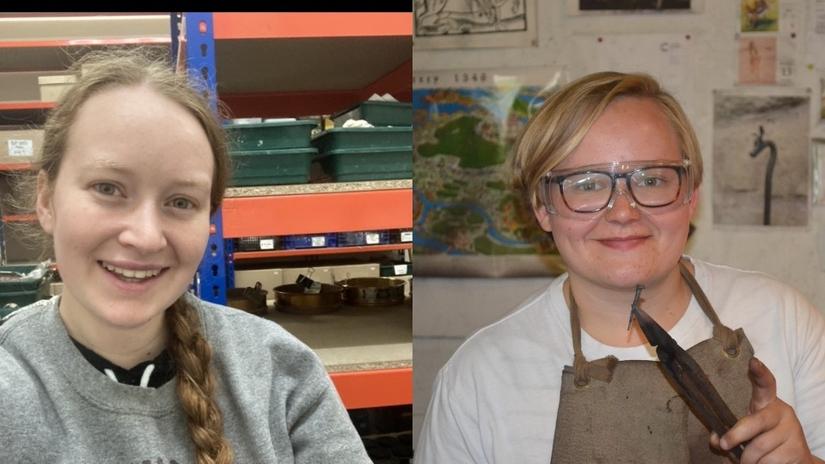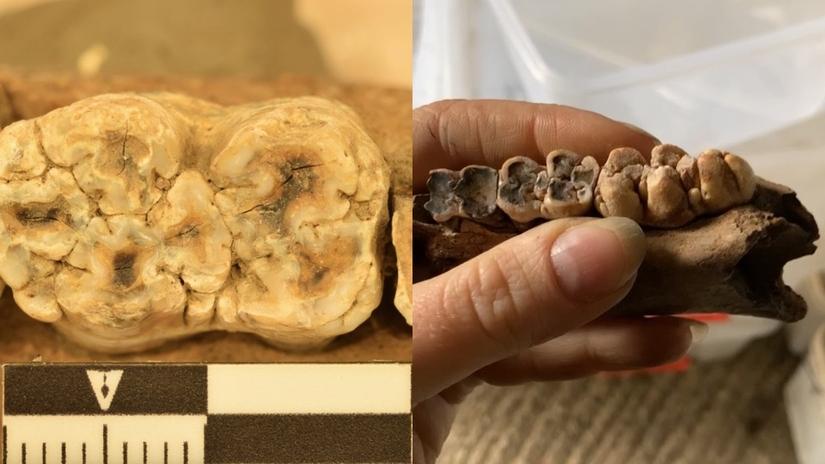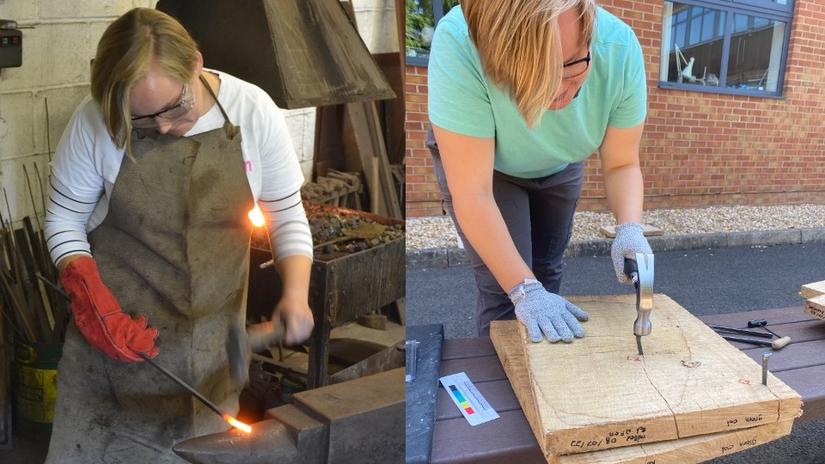Pigs Teeth and Iron Nails – Masters students research the A14 past landscapes
In 2021 Saskia Brogan and Katie Manby were awarded MA Scholarships for Reading University, funded by National Highways. This included placements working with the MOLA Headland team on the A14 Cambridge to Huntingdon Road Improvement Scheme, where they took part in a wide range of post-excavation work.
Now they have both finished their degrees, let’s join Saskia and Katie for a look back at their experiences and to find out the results of their work.

Both Saskia and Katie’s MA dissertations were based on finds from the A14 excavations, with fascinating and nationally significant results.
Saskia
Saskia’s research used a method called geometric morphometrics (GMM) to investigate pig bones from the A14 excavations. This involves using differences in the shape of teeth to show changes in pig populations. Saskia compared the Iron Age, Roman and Saxon pigs of the A14 to a collection from excavations at Silchester (once a large and important Roman town). Excitingly, this is the first use of GMM to study pigs in Britain!

“GMM is relatively new in archaeology. I wanted to explore how it could be used to study pigs in Iron Age, Roman and Saxon England. My results showed areas where important new information can be uncovered. For example, I found wild boar for the first time from both the A14 and Silchester. Using this method to identify wild boar in Britain will hugely improve our understanding of these animals in the past.”
Saskia has presented her findings at the International Council for Archaeozoology Medieval Working Group Conference and is currently publishing her research. Saskia’s experience on the A14 excavations has inspired her to continue in commercial archaeology. She is currently working as an environmental laboratory technician.
“This studentship has offered me incredible opportunities throughout my masters, working with professional archaeology companies. I gained hands-on experience that would not have been accessible otherwise. In the future, I would like to develop my research further with a PhD, and it would be wonderful to continue to include commercial archaeology in this.”
Katie
Katie began her research by looking at over 5000 iron nails from across the A14 landscape. She aimed to discover what they could reveal about the past settlements and societies of the area.
“Iron nails are the most common type of finds from Roman period excavations. As I spent time investigating them for my MA, I was really surprised by how relatively understudied they were. I’m glad I’ve had the opportunity to contribute more to this undervalued object type and make it more useful to archaeologists and finds specialists.”
As part of her research, Katie also carried out some experimental archaeology, spending a day with a blacksmith forging nails!

During her research, Katie found there was no set way of recording nails from archaeological excavations. So, as well as writing her dissertation, Katie has made recommendations for iron nail recording. These have been taken on by MOLA. Katie plans to publish these recommendations, as well other results from her dissertation. This has the potential to impact methods and approaches more widely across the archaeology sector.
“I’m really pleased that some of my work is already being implemented in how MOLA will be recording structural nail fragments for some of their future projects. The opportunity offered by the funded studentship was invaluable to me. The placement I spent with MOLA’s finds team showed me how artefacts are analysed in real-world commercial excavations and how much information can be gained from them. I’m currently starting a PhD on Roman Finds and would not have had the skills or expertise to apply for the PhD without this opportunity.”
Saskia and Katie have both made invaluable contributions to the A14 project with their research. Their work is already having a wider impact. Katie’s recommendations have been taken on by MOLA, and Saskia has presented her findings to an international audience of specialists. Their work will continue to increase our understanding of the past on future National Highways schemes, as well as other major infrastructure projects.
The archaeological programme for the Cambridge to Huntingdon National Highways scheme was carried out by A14 Integrated Delivery Team on behalf of National Highways. Find out more about the A14C2H improvement scheme